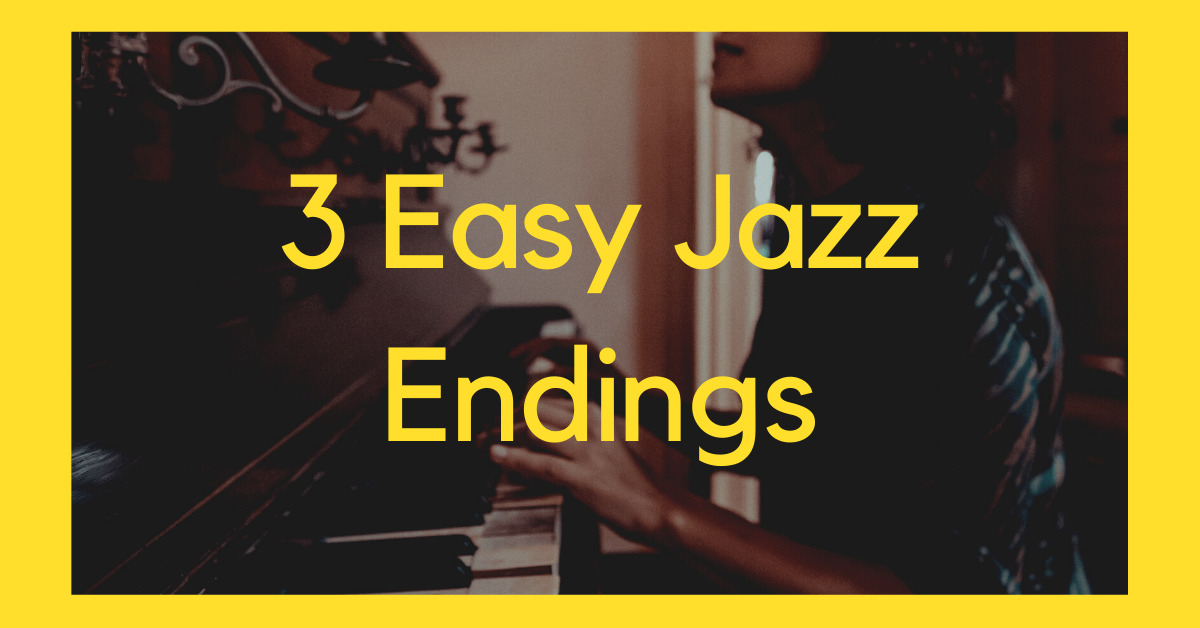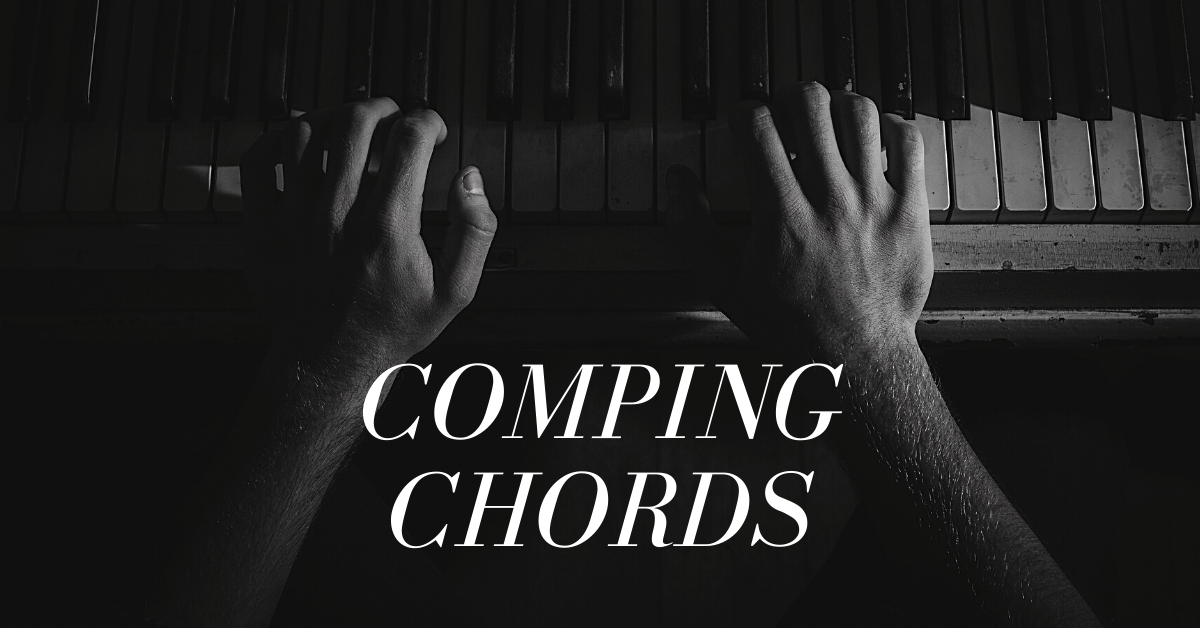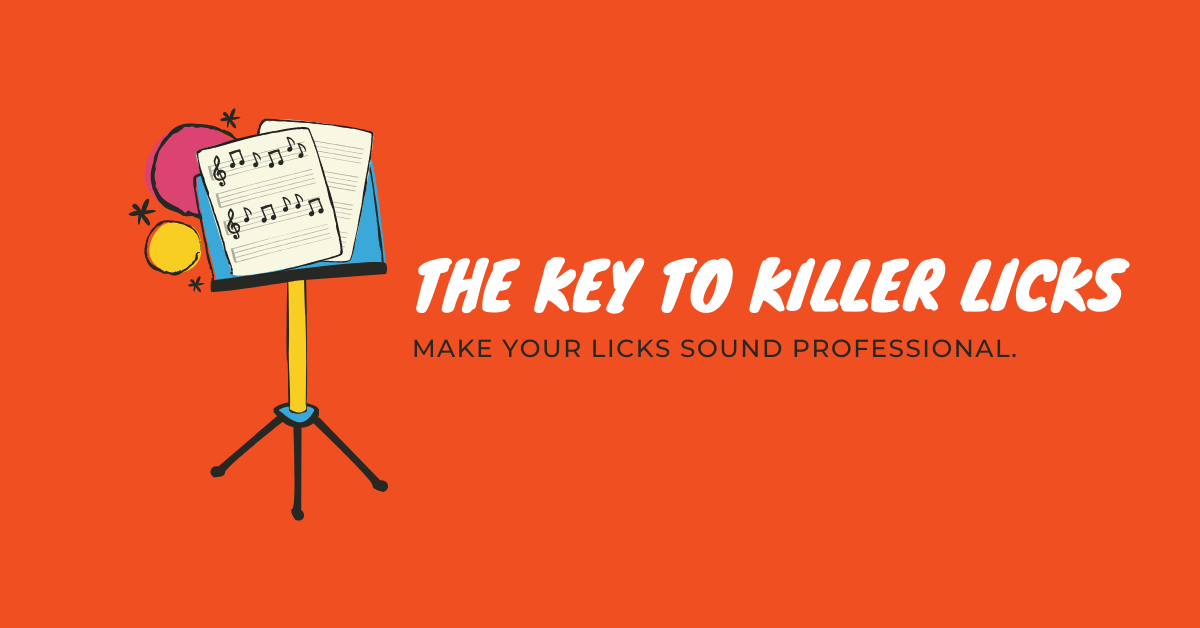These exercises will help you master your 7th chords for faster recall.
Hey guys, Willie Myette
creator of jazz edge, I want to welcome you to episode number 10 of the confident improviser podcast. So today we are going to be talking about the big three seventh chords. And I’m going to show you some cool exercises that they’re going to help you be able to master the seventh chords so that you can recall them faster at the piano, I want to remind you that this podcast is designed to be used along with my confidence in improviser program found at jazz edge, there will be a video replay of this as well, which you could find at the confident improviser.com you could find more information about it there. Okay, so just go back to the confident improviser calm. Alright, so the big three seventh chords. So when I’m talking about the big three seventh chords, I’m talking about major seventh minor, seventh dominant seventh chords, right, you really want to make sure that you know those chord tones. Now we’re using all three of those types of chords, those three quality of chords in exercise number 10, exercise number 10 starts with a C major seventh chord, right, and it goes to an a seven chord, then a D minor, seven chord, and then a g7 chord. So we’re getting the major, the minor and the dominant. Alright, so I got five exercises here that I want to show you that are going to help you be able to master these chords faster. The each of these exercises involves you spelling out the name of the notes in the chord, right. So what that basically means is like if we were to play a C major triad, that would be the notes, C, E, and G, right? So C is the root is the third, g is the fifth. Now I realized that, you know, I have students around the world, and some students, especially in France, and Europe, learn using a solfege method, and they are not actually spelling out the actual note names. So I will tell you that you can do this via soul fish, but it’s going to be a lot more difficult for you. So I suggest and encourage you to learn the note names of the chords, trust me, you won’t regret it down the road, that theory is really going to help you be able to master these chords a lot faster. Okay. All right. So with our C major seventh chord, the notes are C, E, G, and B. So C, E, G, and D, let’s just get down the four chords. First of all, a seven chord is a C sharp, D, and G, D minor seven is D, F, A and C. And finally, g seven is G, B, D, and F. So first of all have to know those chords. If you don’t know those chords, then I wouldn’t bother doing these exercises, because quite frankly, you’re just not ready yet. But if you kind of know the chords, you could, you know, you know the notes of those, you could spell those, these next five exercises are going to help you be able to really lock in those chords. Much better at the instrument. Now you can spell these away from the piano. And that’s what we’re going to be doing here in this podcast episode. But remember, you can also play them as well, right? So these exercises are good to play at the piano. And I will be doing some of that as well. Right. So if you happen to be looking at the podcast, video replay, there is sheet music that you can download for this will make the exercises a little bit easier. Alright, so the first exercise is just going up from the roots, right, so all you’re doing is you’re spelling the chord from the roots of each of the chords. So for C major seventh, spelling it up from the root, it would be C, E, G, E natural, right? So this is what we just did a second ago, right? A seven would be A, C sharp, and G, D minor seven would be D, F, A and C. And finally g seven would be G, B, D, and F. So first of all, you just want to make sure you could spell all those chords going up from the root. The next exercise exercise number two is simply going down. So you start on the seventh, and you go down each of the chord tones. So C major seven, I’ll give you a second. Think about what it is. All right, so it’s B, G, A seven, what is it? It’s G,
C sharp,
D minor seven, start spelling out the notes. It’s C, A, D, and finally g7. What are the notes? It’s f, d, b, and then finally G. Now that little bit of pause that I gave, you should give you enough time to be able to submit those notes before I start to play them. If not, it just means that you have to work on spelling these chords a little bit faster. Okay? All right, exercise number three, this is where it gets a little bit interesting and a little bit more tricky. So let’s take some time on this. So again, the notes of the C major seventh chord, our C, D, G, B, right, and we have this as the root, the third,
the
fifth and the seventh of the chord. Okay, so that’s all fine. So this exercise is called from the third. So that means you start on the third, which is e, and then you spell the rest of the notes. So that would be B, and then C, G. So again, we have root 357. I already said the three I said the third. So now I’m going to say the root, I’m not going to say the third again, because I already said it. So I’m going to skip over, I’m going to say the fifth. And then I’m going to say the seventh. So it goes third, root, fifth, seventh, third, root seven, and the notes for that for C major r, e, c, G, speller for a seven,
C sharp
speller for D minor, F, A, C, speller for G, seven,
B, G.
All right, great job. Now if you didn’t get that, just rewind that, try doing that again. But I’m spelling the third than the root than the fifth than the seventh. Okay, so exercise number four, this is from the fifth. Well, what do you think we’re going to do now, back to our C major seventh chord, now we’re going to say the fifth, which is G, then we’re going to say the rest of the notes, which is then the route, see, the third is D, and the seventh is B. So we go fifth, root, third, seventh, obviously, we skip over the fifth, because we said at the beginning, so five, root three, seven, so that would be for C major, G, C, D, be for a seven, day, C sharp, for D minor,
A,
C, and for G, seven, D, G. All right, great job. And then finally, exercise number five, you guessed it from the seventh. So then we say, the seventh of the chord first, then we go down and say the root, the third and the fifth. So for C major seventh, that would be
B, C, G,
C, G, A, seven, G, C sharp, D, minor, seven, C, D, F. And finally, g seven, F, G, B, D. So you should realize as well on that, from the third from the fifth from the seventh, we did the third than the root, then the fifth and the seventh, we did the fifth than the root, then the third and the seventh, we did the seventh than the root, the third and the fifth, right? So we are always going down, while of course, we could go the opposite direction as well. So when we’re starting on the third, I could go the third E, and then come down from the top, B, G, C, A, B, C sharp, G, D minor, it would be F, C, A, B, and then g seven, it would be b, f, d, g, so just know that you can change around that direction, as well. All right, so let’s talk about practicing these at the piano. Well, when we sit at the piano, we could simply just do these as eighth notes. Okay, so that’s literally just going right, up and down. going right, on up. And if you want you can go down as well. And actually, a real nice exercise is go down one hand and go up the other hand, if you don’t like that interval there, it’s a little too close for you. Don’t worry, I get it. In that case, play the hands an octave apart.
Again, if you don’t like that sounds too much tension then just go into fight. So what you can also do is you could start To mix these together, so we have three root five, seven. Okay, well, let’s do the three root five, seven over here in the right hand, but remember how I said that you could also come down so you could go three, seven, fifth root
that’s separated by an octave. So in the left hand, I’m playing E, C, G. And the right here, I’m going A, B, G, C, right? So you can, there’s all different patterns that you can come up with here of these, but you could find it really quite interesting. What about if you did something like this, rather than going 357? In both hands, do that in the left hand, but in the right hand, let’s keep it simple. Let’s just go root 357.
All right, what if we did five root three, seven in the left hand, and still just do root 357? in the right hand? Right.
So what if you did something to like, go down in the left hand, let’s do this on a seven. So I’m going to do the seventh, the fifth, third and the roots in a seven. So that’s G, C sharp and a in the left hand, and then just to start, I’ll go up in the right hand. That’s pretty simple. So now what if I do the seven root three, five in the right hand.
So I was just going down in the left hand, seven, root three, five in the right hand. So you can practice these, you know, in some more advanced ways like that, but really, the best way to practice them at the piano to just get started. It’s just
just simply go up and down, up and down. And just try and play them nice and steady. You don’t have to go as fast as I just went. That’s good. Not too fast, right? Just nice and steady. That’s the name of the game. Okay. Now, to finish up here, you know, you might have the question. Okay. So why do I really need to know these chord tones? What remember when improvising, if you know your chord tones, you can always use your chord tones for improvisation, and it’s always going to sound great. So listen to what happens if I put on the I real pro track for exercise number 10. Right. And then I’m going to play my just my root three root seven chord shows in the left hand. But now listen to what happens when I am just improvising using chord tones in my right hand. Right? Listen to how good this sounds. There we go. Whoops. Got to put the bass on. Sorry about that. Let’s put that bass sound on right now. Here we go. Excellent.
It’s all cortos. Now again, it’s not blowing the doors off of anyone’s house for improvisation, right? I mean, it’s not the most interesting improvisation that has ever been played. But it sounds good, right? And that’s what we’re looking for. At this stage of the game, just something that we can play, we can hold on to it’s going to sound halfway decent. It’s going to get us an improvisational sound, and then we can always add on to that later. But in order to make this happen, you have to know your chord tones, and you have to know them quick, quick, quick, quick. So if I say a seven, bam AC Sharpie, g you’ve just said it already. If I say D minor seven, you will immediately see it as d f, AC, g seven g b, d, f, h Then you start moving into other keys, E flat seven, E flat, G, B flat, D flat, B flat major seven, B flat, D, F, A, right G major seven, G, B, D, F sharp, right, you should be able to see those chords and be able to spell them very, very, very quickly, faster, the better, right? There’s really, you can’t spell them too fast. So if you can get it down, see EG p, AC sharp, Eg you know, like, if you can get it that fast. Great. If you can spell it that fast. Don’t fret, right? If as long as you could be like, Alright, D minor, seven, D, F, AC, Okay, that’s good. It’s not super fast, but it’s not too slow. The exercises I laid out in today’s podcast will help you get there. It does take work. So be patient with yourself, do the work, right and I’ll see you guys in the next exercise.





